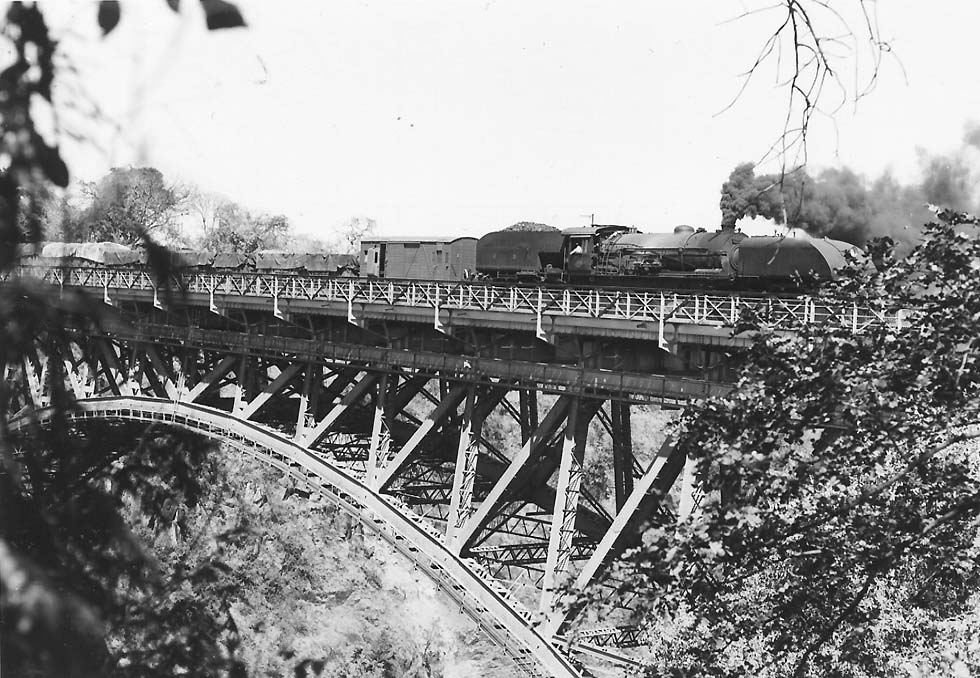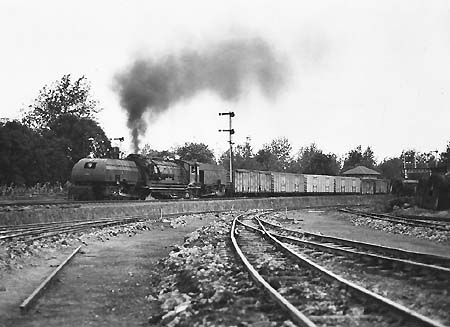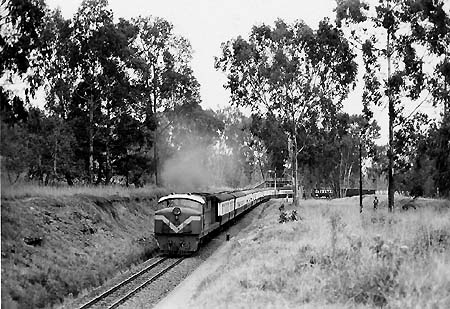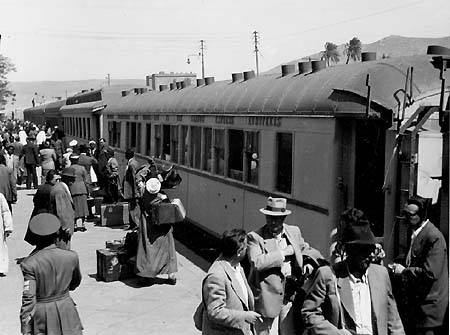|
T h e M y t h

Zambesi bridge, Rhodesia Railways' Garratt, Victoria Falls 1976 (WS)
“Cape to Cairo” was the dream of Cecil Rhodes, a pioneer of the British Empire. Originally it had been intended as an “all-British” railway through Africa. Later, Robert Williams tried it via Katanga, but Belgian King Leopold refused. A UN resolution of 1977 listed the “Corridor No.1” Alexandria - Cape Town as the most prominent railway proposal - the Cape-to-Cairo idea! But the same document stated also, that air transport would be cheaper than building railways. Though the Cape-to-Cairo line never was fully completed, the idea had influenced railway development in all countries situated between Egypt and South Africa, including the Belgian Congo, later Zaire, Angola and Mozambique.
And the expresses, white in Egypt, Sudan and Ethiopia, of varnished wood in the Center and the South of the continent, represented the dream of African journeys in colonial times. Not to forget the locomotives: In Egypt after WWII even a Hudson for 140km/h had been envisioned.In East Africa, Angola and Rhodesia ruled the huge Garratts, but in Nigeria and Katanga there were beautiful “Mountains”. In South Africa, even streamlining some mountains of class 23 for the Union Limited was examined, but not carried out. Finally the “Red Devil” was developed there by Dave Wardale from the mighty class 25 Niagaras, which still represented the clear style of the pre-war Henschel Pacifics. It was the most advanced steam locomotive of the world.
 Garratt class 59, Nairobi 1976 (WS)
Garratt class 59, Nairobi 1976 (WS)
 Uganda Mail Nairobi - Kampala, class 87, Nairobi 1976 (WS)
Uganda Mail Nairobi - Kampala, class 87, Nairobi 1976 (WS)
 Star of Egypt Cairo - Aswan, CIWL sleeper, in the backround Egyptian diner, probably from the royal train, Aswan 1954 (Dr. Fritz Stoeckl)
Star of Egypt Cairo - Aswan, CIWL sleeper, in the backround Egyptian diner, probably from the royal train, Aswan 1954 (Dr. Fritz Stoeckl)
Literature
By the author, covering the complete railway history of Africa, (except the Maghreb and the West), including trains' formations, locomotive and CIWL car lists, and a comment upon the UN resolution from 1977:
Kap-Kairo
Dusseldorf 1985 (sold out).
The book is placed in the libraries:
Bayerische Staatsbibliothek, Munich;
British Museum, Central Library, London;
DB-Museum, Nurnberg
Musee francais du Chemin de fer, Mulhouse;
Museum für Verkehr und Technik, Berlin;
National Railway Museum, York, UK;
South Africa Railways, The Chief Mechanical Engineer's office, now Spoornet, Pretoria.
The author's extensive photo collection has been donated to the British Museum, London.
|








